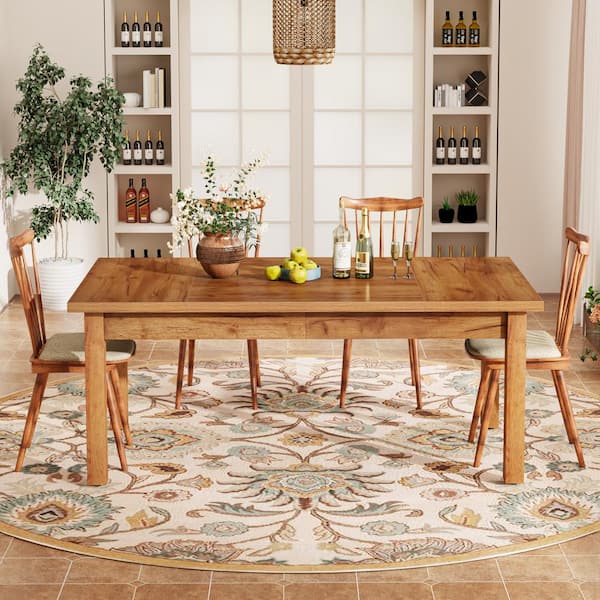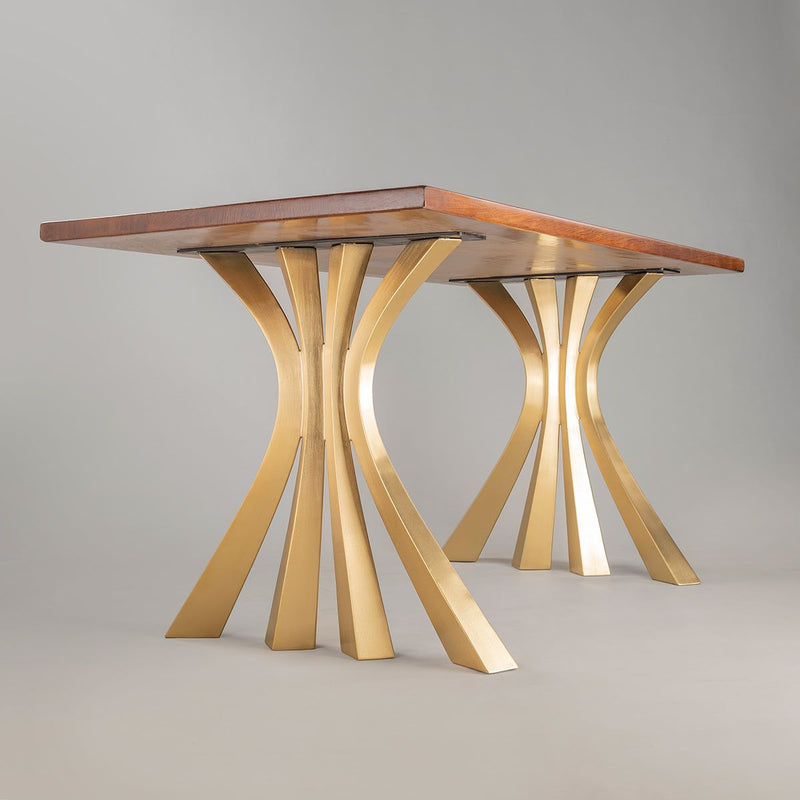Dining Room Table Legs That Integrate Performance and Modern Design
Dining Room Table Legs That Integrate Performance and Modern Design
Blog Article
Choosing the Perfect Eating Table: What Styles Job Best for Your Home?
Choosing the optimal table for your home can be a nuanced procedure that balances appearances and performance. Whether your space leans in the direction of standard beauty, modern-day minimalism, rustic appeal, or commercial trendy, the variety of designs available can deal with diverse preferences. Each design provides one-of-a-kind benefits and obstacles that can either enhance or interrupt your dining location's harmony. Recognizing how various products, shapes, and sizes connect with your existing design is crucial. To navigate these selections efficiently and discover a table that absolutely complements your home, consider the adhering to aspects in detail.
Assessing Your Space
Examining the measurements and format of your eating location is an important very first step in selecting the ideal dining table. Begin by determining the length and width of the space, representing doorways, windows, and other architectural features that could affect table placement. This guarantees that your table not only fits however likewise permits comfortable motion around it.
Think about the number of people you usually amuse. A table must suit your family's everyday requirements while using adequate versatility for occasional guests. As a rule of thumb, allocate a minimum of 24 inches of table size per individual to make sure a comfy dining experience.
It's also vital to maintain ideal clearance around the table. Preferably, there must be at the very least 36 inches in between the table edge and walls or various other furnishings, allowing easy accessibility and activity. For spaces where chairs with arms or additional storage space systems like buffets are involved, increasing this clearance to 48 inches is suggested.
Lights and environment play considerable duties. Make sure that your table straightens with existing lights components or plan for ample illumination solutions. This thorough spatial evaluation guarantees that your table not only fits literally yet likewise harmonizes with your space's overall capability and aesthetic.
Popular Table Styles

Standard table commonly include elaborate details, curved legs, and rich timber finishes, evoking a sense of classic beauty. They are excellent for homes with timeless decoration or those seeking to add a touch of elegance to their dining area.
Modern eating tables prioritize simpleness and tidy lines, commonly integrating materials like glass and metal. These tables are perfect for modern rooms, supplying a smooth and uncluttered appearance that matches minimal style viewpoints.
Rustic eating tables, on the various other hand, emphasize all-natural products and a handcrafted look - dining room table legs. They typically include recovered wood and a troubled surface, creating a cozy and inviting ambience. These tables work well in farmhouse-style homes or those seeking a cozy, natural feel
Industrial eating tables combine basic materials such as metal and timber, typically Related Site showcasing an utilitarian aesthetic. This style is appropriate for lofts or metropolitan spaces, including a touch of rugged appeal and resilience to the dining experience.
Each design provides distinctive advantages, making it vital to select one that straightens with your home's general style and your personal choices.
Material Selections
When selecting an eating table, the choice of material plays a critical function in establishing both the table's aesthetics and performance. Timber, metal, glass, and composite materials each deal unique benefits and obstacles, making it vital to straighten the product with your home's design and way of living needs.
Wood is a classic and versatile option, offered in selections such as oak, walnut, and mahogany. Understood for its durability and warmth, wood enhances both typical and contemporary interiors. description It requires regular maintenance to stop scrapes and bending.
Metal tables, usually crafted from stainless steel, aluminum, or wrought iron, are praised for their contemporary charm and toughness. They are especially fit for industrial or minimalist settings however can be susceptible to dents and may feel chilly to the touch.
Glass table bring an air of style and openness, ideal for smaller rooms as they develop an impression of even more area. While simple to tidy, glass can be prone to spots and calls for mindful taking care of to stay clear of chips and splits.
Composite products, such as MDF and web link plywood, offer affordable and personalized solutions, though they might do not have the durability of natural materials. Selecting the ideal product ensures your table is both a practical possession and a visual joy.
Sizes And Shape Considerations
After determining the proper material for your eating table, the next consideration is picking the ideal form and size to match your space. Alternatively, rounded tables foster a feeling of intimacy and are exceptional for smaller sized dining locations, encouraging conversation by removing edges and making everyone really feel equally consisted of.
As a rule of thumb, assign at least 24 inches of table width per person to ensure comfortable dining. Additionally, consider the table's clearance space: there should be at least 36 inches in between the table side and the wall surfaces or various other furniture. Prolonging tables offer adaptability if you regularly host larger gatherings, offering additional seating when required without inhabiting additional area daily.
Matching Your Design
Choosing a dining table that integrates with your existing style is essential in creating a natural and inviting space. Begin by analyzing your present interior layout style, whether it be contemporary, traditional, rustic, or diverse. The dining table need to match the total visual, not compete with it. For instance, a sleek, minimal table with clean lines is excellent for a contemporary home, while a vintage, ornate table fits a more standard setting.
If your design includes cozy tones and all-natural products, take into consideration a wooden table to enhance the natural feeling. Alternatively, a glass or steel table might be more suitable in a space dominated by amazing shades and commercial elements.
Texture plays an important function also. A rough-hewn, redeemed timber table can add personality to a rustic room, while a sleek marble surface can raise a lavish dining location. Ultimately, consider the scale and proportion of the table in connection with the area dimension and existing furniture. A well-matched dining table not just boosts visual allure but additionally enriches the overall dining experience.

Final Thought
Picking the suitable eating table requires mindful factor to consider of room, style, products, shape, and dimension (dining room table legs). Typical tables enhance traditional insides with rich timber finishes, while modern-day tables fit modern setups via glass and steel. Rustic designs introduce warmth via all-natural materials, and commercial designs improve urban atmospheres with raw elements. Harmonizing the table with existing decoration makes sure both functionality and visual charm, adding to a cohesive and cosmetically pleasing eating area.
Report this page